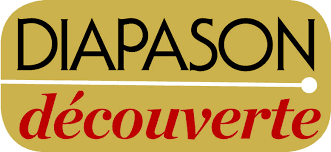Istvánffy Chamber Choir | Lőrinc Muntag Porta: Missa Mortuorum
"I believe I know the art of Costanzo Porta too, but here and now I have the sense of never having heard his music before. Yes, that divine calm: there are no questions, merely the certainty of the flow of notes. The perfect ground for contemplation. As a Franciscan monk, Porta knew all about meditation. He knew about timeless prayer, and may well have been touched by shining quietude, for he dedicated his life to it. (...) Porta is dear to my heart, I confess, and it surprises me even today how neglected he is in musical life. This album thus meets a long-awaited need. It shows Porta’s greatness as a composer on several levels." (Zoltán Mizsei)
Artists
Istvánffy Chamber Choir
Lőrinc Muntag – conductor
Eszter Gyüdi, Roberta Szklenár – soprano
Dorottya Suba, Viola Thurnay – alto
Ádám Hohmann, Bálint Kis, Márton Tóth, Márton Ujházy – tenor
Domonkos Dergez, Péter Mekis – bass
About the album
Recorded by Péter Erdélyi at the Queen of Heaven Church, Sopronbánfalva on 10-12 July, 2018
Recording producer: Lőrinc Muntag
Mixed, edited and mastered by Péter Erdélyi
Special thanks to the Sopron Suburban Parish
Artwork: Anna Natter / Cinniature
Produced by László Gőz
Label manager: Tamás Bognár
Reviews
J. F. Weber - Fanfare Magazine (en)
Karsten Blüthgen - Chorzeit Magazine (de)
Guillaume Bunel - DIAPASON (fr) - Découverte
Matti Komulainen - HIFImaailma (fi)
Fittler Katalin - parlando.hu (hu)
Komlós János Jr. - alfoldiregiomagazin.hu (hu)
The album is available in digital form at our retail partners
It’s good to see things are happening, after all. It’s good to hear that Schola Hungarica actually could be a school for today’s young musicians. Even if the Istvánffy Chamber Choir sounds nothing like the Schola. But it wouldn’t sound like this, if it hadn’t been for Schola. Just like me, their director has been imbued with the Dobszay approach to music since childhood, and this can be heard on this first album by the choir, although the recording displays a completely independent sound and musical shape. Note that the choir includes several old members of Schola, and the Gregorian movements interspersed into the liturgy of the office for the dead, are taken from codexes sung so often by the Schola (the Bakócz Gradual, the Pauline Cantual, Czestochowa, and the First Knauz antiphonal). And what are they like? The best way I can describe it is by saying that only now do I really understand what it must have been like 50 years ago when, thanks to Schola, people in Hungary first heard Gregorian chant on an audio record (or at all). Listeners then spoke of fervour, a sense of divine calm. As for me, who grew up in the choir, I didn’t understand this feeling, because at the time I was singing Gregorian on a weekly basis. I believe I know the art of Costanzo Porta too, but here and now I have the sense of never having heard his music before. Yes, that divine calm: there are no questions, merely the certainty of the flow of notes. The perfect ground for contemplation. As a Franciscan monk, Porta knew all about meditation. He knew about timeless prayer, and may well have been touched by shining quietude, for he dedicated his life to it.
Zoltán Mizsei
Translated by Richard Robinson
composer, conductor
As a child Lőrinc Muntag learned the violin and piano, and in addition he sang for years in Schola Hungarica under the direction of Janka Szendrei and László Dobszay, and also in the Saint Stephen Boy’s Choir under the direction of Zoltán Mizsei.
He studied composition at the Béla Bartók Conservatory and Grammar School with István Fekete Győr, then at the Liszt Academy under László Vidovszky, where he graduated with honours in 2015. He took part in composition courses given by Gyula Csapó, Péter Eötvös, Charles Ames, Larry Polansky, Philip Glass, and Christian Wolff, and his pieces have been played at festivals such as Ostrava Days (2011, 2013), Café Budapest (2015, 2017, 2019) and Klangraum Düsseldorf (2019, 2020, 2021). He has been a member of the following international composer’s collectives: CentriFUGA, the Hermina Artists’ Group, and Wandelweiser.
From 2011 to 2014 he led the Cantorate in Budapest’s Ferenctown. He was the artistic director of the Gregorian schola of the traditional old rite masses in the Budapest Inner City Main Parish Church in 2014-2016, and of the Saint John the Baptist School of Singing in Zsámbék in 2015-2019.
In 2014 he founded his own ensemble, the Istvánffy Chamber Choir.
Since 2020 he has participated in the postgraduate programme for conductors of the Zürcher Hochschule der Künste, where his teacher is Iwan Wassilevski.
The Istvánffy Chamber Choir was founded by Lőrinc Muntag in 2014. The repertoire of the group consists primarily of Gregorian chant, sacred works of the Renaissance, Bach cantatas, and Romantic and contemporary a capella works.The choir has given the world premieres of many works (particularly those of Ádám Bajnok, Máté Balogh, Lőrinc Muntag, László Sándor, Lőrinc Szécsi, Márton Szőcs, and Péter Tornyai).
The Istvánffy Chamber Choir has performed with success at many festivals and competitions all over Europe. In 2017 at the London International A Capella Choir Competition they achieved an outstanding result, and that same year in Germany they made a tour as part of the Reformation 500 series. In 2018 in Košice they presented the Porta compositions that form the backbone of this CD, and they also gave an outstanding concert in 2019 in Laredo in Spain, in the 5th Ciclo de Musica Religiosa festival.
